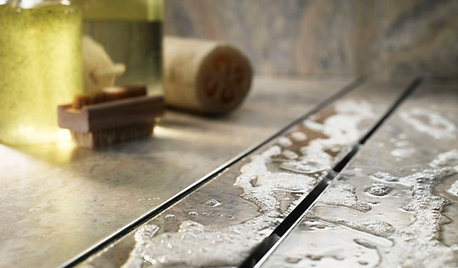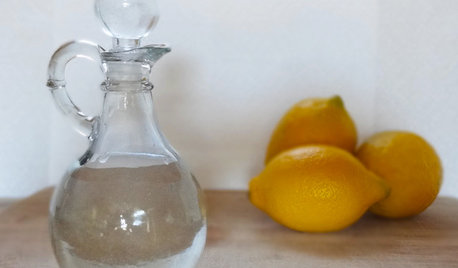How do you clean your salt chlorinator?
richgator
16 years ago
Related Stories

MY HOUZZMy Houzz: Charming Update for a 1920s Bungalow in Salt Lake City
Travel-inspired style and new finishes help the original character shine through in this designer’s home
Full Story
HOUSEKEEPINGHow to Clean Marble Countertops and Tile
Acidic solutions can damage your marble surfaces. Here’s how to keep marble looking clean and amazing
Full Story
WOODWORKINGHow to Clean and Care for Your Butcher Block
Keep butcher block counters and boards looking sharp as a knife — and sanitized for safe food prep — with this advice from a pro woodworker
Full Story
HOUSEKEEPINGHow to Clean Stainless Steel
Protect this popular kitchen material with a consistent but gentle cleaning routine
Full Story
HOUSEKEEPINGHow to Clean a Glass Shower Door
See which tools and methods will keep those glass shower walls and doors sparkling clean
Full Story
HOUZZ TOURSMy Houzz: Pure Simplicity Reigns in Salt Lake City
Minimalist style puts dynamic architecture and hillside views front and center in a renovated Utah home
Full Story
HOUSEKEEPING12 Cleaning Projects That Go a Little Deeper — Naturally
Eucalyptus oil for germy door handles. Baking soda for oven grime. Here are nontoxic solutions for often-overlooked cleaning jobs
Full Story
HOUSEKEEPINGVinegar and Voilà: Clean Your House the Natural Way
Ditch the commercial cleaners for nontoxic, inexpensive and versatile white vinegar
Full Story
DECORATING GUIDESRoom of the Day: Elegant and Eclectic Salt Lake City High-Rise
Hand-blocked wallpaper sets a beautiful organic tone in this young professional’s apartment
Full Story
HOUZZ TOURSMy Houzz: Wanderlust-Fueled Decor in Salt Lake City
Globally gathered and family pieces bring personal warmth to a historic Utah home
Full StoryMore Discussions









azbabs
ventura43
Related Professionals
Belmont Landscape Architects & Landscape Designers · Franconia Landscape Architects & Landscape Designers · Hyattsville Landscape Architects & Landscape Designers · Otsego Landscape Architects & Landscape Designers · Lakeville Landscape Contractors · San Rafael Landscape Contractors · Quartz Hill Landscape Contractors · Boone Decks, Patios & Outdoor Enclosures · Carlisle Decks, Patios & Outdoor Enclosures · Kansas City Decks, Patios & Outdoor Enclosures · Meridian Decks, Patios & Outdoor Enclosures · North Aurora Decks, Patios & Outdoor Enclosures · Northglenn Decks, Patios & Outdoor Enclosures · Olathe Decks, Patios & Outdoor Enclosures · Statesville Decks, Patios & Outdoor Enclosuresfl-waterbug
lancer1991
repair_guy
jerseymom
repair_guy
lancer1991
info_watermaid_com